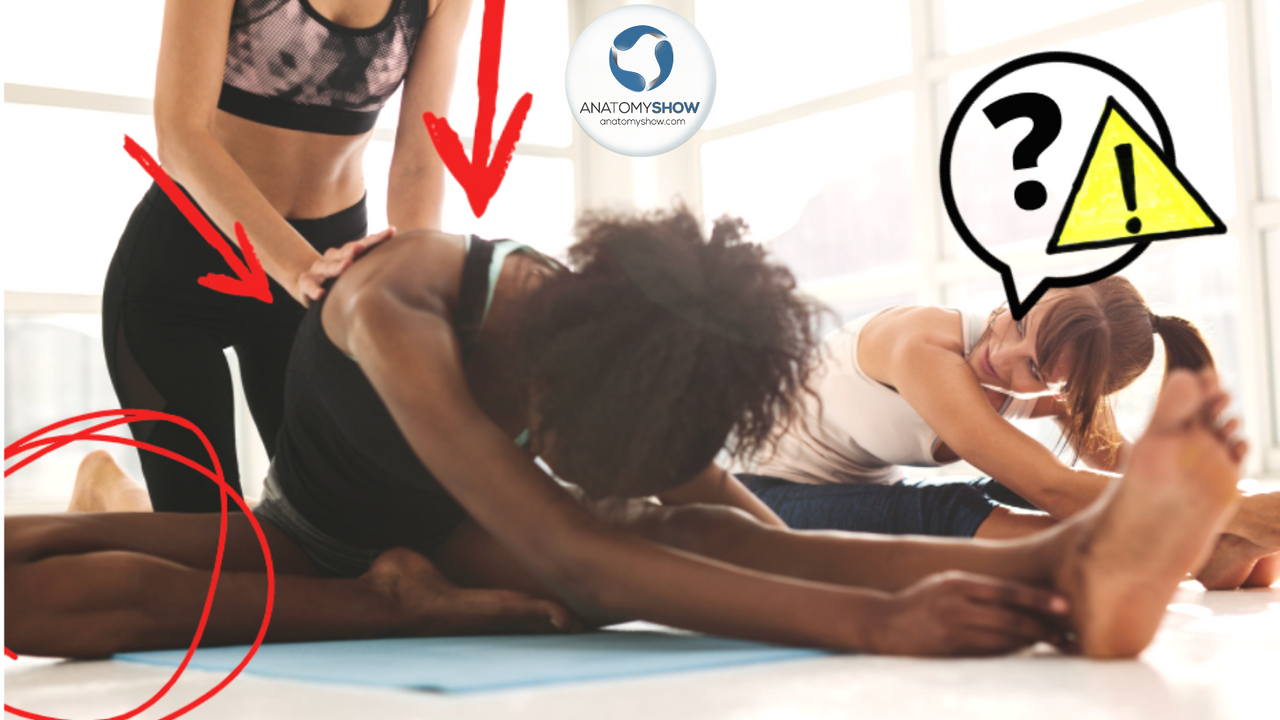The AnatomyShow BLOG
This question is not just about downward dog yoga posture. The enquiry can be expanded to question the practice of any pose.
Maybe we can ask what the purpose of any given pose might be.
For you. Not the general purpose. The general purported purpose you can look up in many available yoga books from ...
Upward facing dog was amongst the first yoga postures we practiced when I began taking yoga classes many years ago. With it came the spinal extension, the compressive feeling in the lower back and the instruction to tilt the head back and look up.
Over the years I learned this pose supposedly has ben...
What are you really challenging in boat pose / navasana?
Hip flexors, hamstrings, thigh muscles, or your back?
The leg position has a big influence on what the focus of the posture is for many of us.
This video explains why practicing with bend knees is more likely to direct the effort to your hip fle...
Be careful with sharp knives. A sharp knife can injure you more easily.
Who remembers being told this when growing up? Or maybe you still hear it now?
For workplace safety, based on these cautions, wouldn’t it be advisable for cooks and chefs to have blunt knives? That would ensure more consistency ...
Most of us have areas or regions in the body that complain in some way when asked to move or when put under pressure.
One way to describe these ‘complaints’ is pain.
A very common response to pain that is experienced in yoga classes is to receive the instruction to avoid the movement or posture.
Avoid...
Any yoga posture is an adjustment of our posture. From a more generalized perspective that is.
The question if adjustments make your practice better or worse, we’ll leave for a different discussion.
Think of yourself standing somewhere, in line to get a beverage maybe. Would you be like a good majorit...
There is an interesting and very important difference between living and man-made structures.
While it may seem obvious, some of these differences are still neglected today when movement and postures are considered, as for example, in modern yoga teaching.
Right now, I’m building a little cabin / tiny...
Balance is a two-way street.
We are coping with balance quite well so far. We are walking, running, and standing for most of our lives. Keep in mind though, you practised this for years when you grew up as a little kid.
Further challenges we encounter in later life require physical and physiologi...
The movement we think we are doing, how we imagine our posture looks like, and the reality are often quite different.
This disconnect between perception and reality is based on the integration of specific nerve receptor information in our body.
Watch the video to learn how you can train these recept...
‘You are crazy!’ This was the first response I got when suggesting I could run across a boulder field of loosely piled up rocks.
Walking was challenging. People with hiking boots, sneakers or other footwear moved gingerly as if walking on glass or egg shells.
And here I was almost barefooted. A th...
Our collarbones are easily visible structures on the front of the the body.
Their position and instructions on where and how they are supposed to be held vary.
In this video we take a look at the influences on collarbone positions to give you an informed perspective on how to hold and understand...
Tightness in the calves can be successfully addressed with fascia rolling.
Watch this video to learn the anatomical and physiological background for addressing the calves with fascia rolling.
Understand three types of forces and and the three modes in which fascia rolling can be applied best for...







